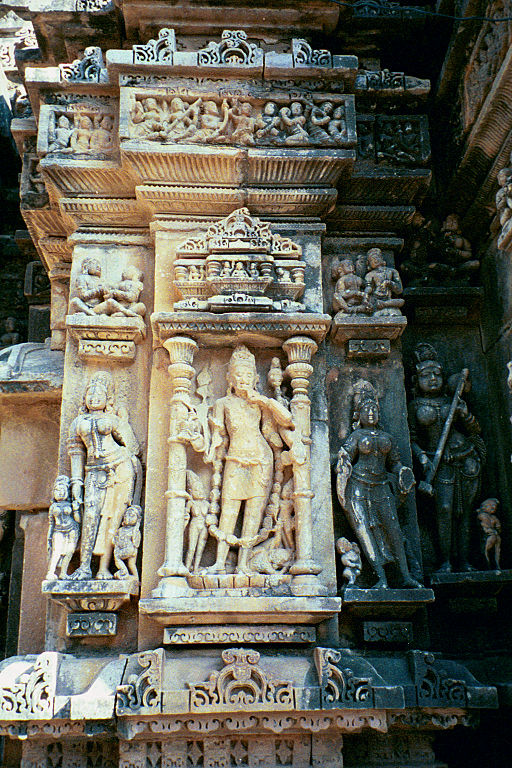
Chamunda, or Kali
Ambika Mata temple, Jagat
A fierce form of Devi, Chamunda is portrayed as a frightening, emaciated hag. Her attributes include fangs, a sword, Shiva's trident, skull garland, skull staff, skull bowl, and skeletal corpse which she tramples or sits on. Sometimes the image of a scorpion is carved on her concave and emaciated belly.
It can be difficult to tell Chamunda and Kali apart, since these goddesses share many attributes. Chamunda is as an old woman, whereas Kali may be of any age. Chamunda is never attractive, but Kali can be beautiful. Chamunda is passive, Kali is active. While Chamunda projects only fear and horror, Kali takes pleasure and delight in the triumphal exercise of her power – the grinning skull, rather than Chamunda's grimacing skull. Kali is Time, Chamunda is old age and death – as if to say, this is what awaits you.
Chamunda is one of the saptamatrikas, or Seven Mothers. The Mothers are fearsome goddesses, abductors and eaters of children; that is, they were emblematic of childhood pestilence, fever, starvation, and disease. They were propitiated in order to avoid those ills, that carried off so many children before they reached adulthood.
By the 6th century, each of the Mothers (except for Chamunda) had come to take her name and iconography from a particular male god. There is no obvious theological reason for this process. Aside from their external attributes, the Mothers do not seem very different in terms of their primary identity.
In spite of what has been written above about their nature and origin, the Mothers (again, except for Chamunda) show at times a more benign aspect, especially in their secondary identities as the female manifestations of their male counterparts. For, much more so than with the male gods, Devi encompasses all polarities.
The Seven Mothers, in their normal order, are: Brahmani (Brahma), Maheshvari (Shiva), Kaumari (Skanda), Vaishnavi (Vishnu), Varahi (Varaha, the boar incarnation of Vishnu), Indrani (Indra), and Chamunda. Of these, Varahi, with boar's head, and Chamunda are the easiest to recognize; the others sometimes display attributes of the parallel masculine deity.


